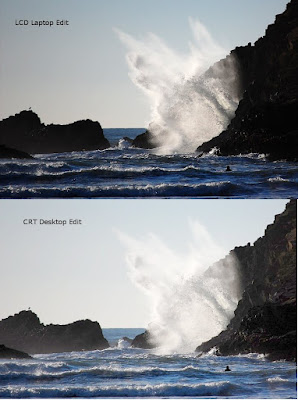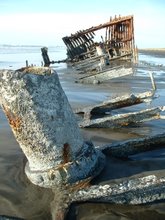I'm Still Here
I haven't posted anything in an eternity, but wanted to let you know I am still here.
I haven't posted anything in an eternity, but wanted to let you know I am still here.
Posted by
DMo
at
7:49 AM
0
comments
![]()

Posted by
DMo
at
8:21 PM
0
comments
![]()
Labels: photography
In light of the Cinematography merit badge I've been doing with the Scouts I decided to look at the Indiana Jones and the Shark Treasure story the kids and I did.
Basically, the kids created the scenes with their Legos and told me the story element; I took the pictures and tried to tie the story together in a PowerPoint presentation. Then I used AuthorPOINT Lite (the free version) to turn it into a web presentation. It was pretty fun.
While reviewing the story, I could identify a few cinematography techniques we used to tell the story. Can you identify some of them?

Posted by
DMo
at
4:24 PM
0
comments
![]()
Labels: cinematography
Here is the test we took for the Cinematography Merit Badge:
1. What is Visual Story Telling
2. What is the Cinematographer's Role in the Movie-making Process?
3. Draw a diagram illustrating four-point lighting
– Bonus: label the light sources
4. What is the 180-axis rule?
5. Draw a diagram of a Zoom lens
6. Draw a simple picture illustrating proper use of the Rule of thirds.
7. Describe four framing techniques.
8. Describe four motion techniques.
9. How does a wide angle lens differ from a telephoto lens?
10. How does rhythm affect a movie?
11. What role does viewer perspective play in movie-making?
12. How does a treatment differ from a script?
13. Why is Story Boarding used in Cinematography?
14. Label the functions of a tripod. (Official names of parts are not required.)
Here is a list of things to do to finish the Merit Badge:
Treatment & Story Board
Shoot a Short Film
Demonstrating techniques discussed in class including proper use of:
– Tripod, hand-held, angle, panning, framing, and lighting
Identify Three Cinematography Careers (hint: Cinematographer, or Director of Photography, is an actual career title, search for motion picture careers that do work with cameras or lighting or other jobs related to camera-work. You might try looking at the Credits of a movie for ideas. Also, you can search the Career Guide to Industries: http://www.bls.gov/oco/cg/)
– Pick one and explain education, training and experience needed.
– Why might this career be interesting to you?
Posted by
DMo
at
10:06 PM
1 comments
![]()
Labels: cinematography
I had the opportunity to start helping our local Scout Troop earn the Cinematography Merit Badge. I'm having a lot of fun.
For the Scouts, here is a sample treatment, Story board and the video to go with it.
Treatment:

Posted by
DMo
at
12:06 AM
0
comments
![]()
Labels: cinematography
Most digital SLR cameras record their pictures a jpeg (.jpg) images. However the language the camera uses to understand the image it sees before it translates it to jpeg is called the RAW data. There are differing opinions (among both professional and non-professional photographers) about whether or not it is better to shoot RAW or let the camera just translate it directly to jpeg or other common picture formats.
RAW contains a lot of information about the image so it consumes a lot of file space on the memory card and on the computer. RAW may also require special software and/or codecs so you computer can actually read the picture information. (I use the free UFRaw in conjunction with Gimp.) However, since RAW is how the camera sees the image information, it arguably provides more accurate images. Editing RAW images may also retain its information quality. Before you share RAW images, you have to translate them to jpeg or another format so others can view them. RAW is ideal for pictures to which you are planning to do some sincere quality editing.
Jpeg is a compressed picture format. As such a storage card can hold more pictures (with my Nikon D40, the highest quality .jpg photo is half the size of the RAW data). Conveniently, all computers can already read and edit jpeg files. However, since the jpeg is a translation of the camera information compressed into a smaller file, reduction in quality and loss of picture information may exist. Each time you edit jpeg the quality of the picture degrades. Jpeg format is great for everyday sharing of pictures and if your not really picky about the little intricacies of how the photo looks.
I used to be biased towards jpeg, but I've been playing with RAW a little bit more lately. I'm still torn on which one I like better. The jpegs come out great...and with some minor editing can look pretty nice. However I like the more natural color quality in the RAW images with which I've played. In my experience there editing raw is a little more labor intensive than the pre-adjusted jpeg images, but that is kind of the point with the RAW images. I also notice that RAW reveals a lot more detail and texture than the jpeg translations and its it easier to correct over and underexposed pictures in RAW.
I think the only way to tell which one you like better is to try them both. Below you can see a jpeg simple edit compared to a RAW (Nikon NEF) simple edit to see what you think. (Click the picture if you want to see more detail.)
Posted by
DMo
at
5:58 PM
0
comments
![]()
Labels: jpeg, jpg, photography, RAW
We were enjoying a quiet Sunday afternoon at home when suddenly we were startled by a heart-stopping disruption. All of us were thrust to the ground and things started flying off of the shelves and walls.
When the reality hit us that we were experiencing a violent earthquake, we all dropped, covered and protected ourselves as best we could. I grabbed baby B, held her close and tried to protect her.
When the shaking stopped, we caught our breath again and made sure everyone was alright. J hurt his arm pretty badly which required some quick first aid and T could barely walk on his right food, but fortunately most of us only sustained a few cuts and bruises.
Our house was in shambles with furniture, books/papers, videos, toys, roof tiles, glass, wood splinters and fallen boards randomly scattered all over the place. We had to watch where we were stepping to make sure we didn't get hurt even more.



Posted by
DMo
at
6:49 PM
2
comments
![]()
Labels: Earthquake, Emergency Preparedness, Tsunami
